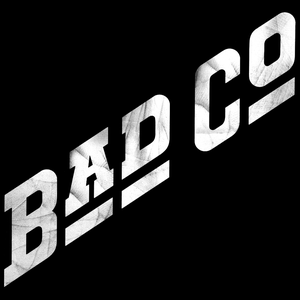Published on Mar 12, 1999
After the rise and nearly immediate collapse of Blind Faith, one
would have thought that musicians would have been scared off of the
idea of supergroups. Combining so much diverse talent into one band
was a great idea on paper, but could it be too volatile a mix to
work?
Then again, Led Zeppelin was successful, though one could argue
if they fell under the term “supergroup”, as the only member who
was well-known at the time was Jimmy Page. But enough bands saw the
glimmer of promise in the concept of supergroups – a glimmer that
led former members of King Crimson, Free and Mott The Hoople to
form Bad Company.
Vocalist Paul Rodgers, guitarist Mick Ralphs, bassist Boz
Burrell and drummer Simon Kirke were the first act ever to be
signed to Led Zeppelin’s Swan Song label. And while there are
definite signs of aging on their self-titled debut, there are still
moments that make the experience all worthwhile.
The one thing that strikes me about this album is that the
production quality is very rough. There is not a lot of treble or
bass in the mix, leaving the sound raw and a little uncomfortable
at times. (I don’t know if this was fixed when the album was
remastered for CD; I’m still working off my old vinyl copy.) But
for certain songs, this atmosphere is perfect.
About half of this album gets regular play – or overplay,
depending on your point of view – on radio today. “Can’t Get
Enough,” the album’s opener, is the perfect shot needed to both
introduce the band to the listener and to suck them in for the
remainder of the journey. The track is a combination of controlled
order and frantic energy, a yin-yang that makes this track into a
classic. Even now, 25 years after this song was released, I still
don’t get tired of it.
Of the remaining rockers on
Bad Company, only “Rock Steady” fails to please completely.
I found myself wishing that the basic rhythm and melody of the song
had been worked on a little more; it comes off sounding very
simplistic, something one would not expect from Bad Company. The
other tracks, “Movin’ On” and the title track, both are fun numbers
to listen to, the latter almost sounding like a sinister track from
a Western movie, with the build from piano and vocals to full
band.
But Bad Company, throughout their history, had a habit of mixing
the rockers with soft, slow ballads – something I can’t say I
always enjoyed. “Ready For Love” is one that still gets airplay,
and is one that takes a long time to build into anything
respectable. “Don’t Let Me Down” and “The Way I Choose” are not
much better in this department.
Then, there is “Seagull,” a track that was supposed to show the
band’s sensitive side. (What the hell was
with this bird in the ’70s, anyway? I mean, there’s this
track, Engelbert Humperdinck’s “Lesbian Seagull” and the book and
film
Jonathan Livingston Seagull? I had to read that book in high
school; it was a nasty drug trip.) Instead, it showcases Rodgers as
a vocalist, and it doesn’t do a bad job of that. What is annoying,
however, is that Ralph’s guitar is slightly out of tune on the high
“E” string, something that is painfully noticeable during the
choruses.
The funny thing is that half of
Bad Company – the best half – is reprised on
10 From 6, the obligatory “greatest hits” compilation. And
while this album is one that you may want to check out if you want
to get past the radio-friendly material, you’re almost better off
buying the best-of instead.
Bad Company painted a picture of a band whose formula would
not change too much over the course of their career: good songs
mixed with weaker. Worth checking out, but approach it with
caution.
